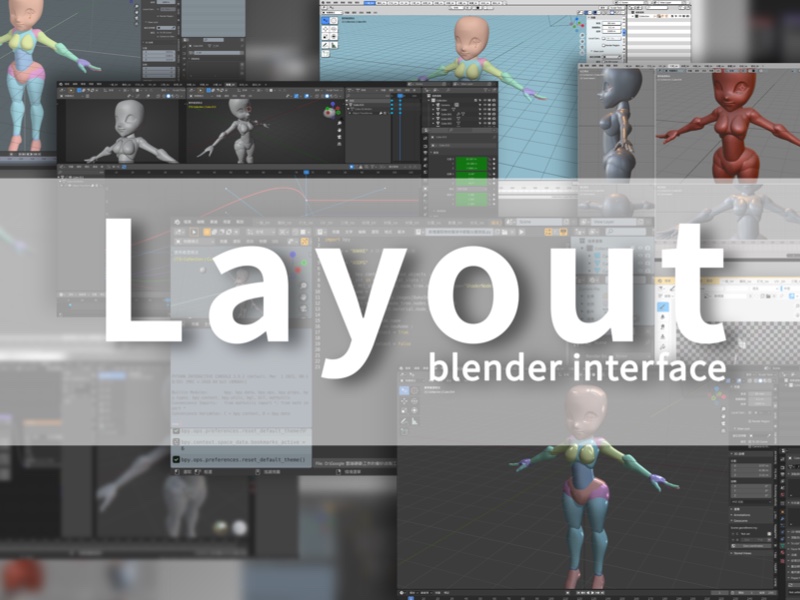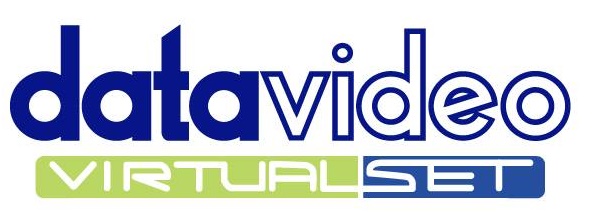
Blender UI Descriptions and Operations
The UI of Blender 2.7X was a single divided window, allowing you to switch between different functions by selecting the corresponding areas.
The UI Inherited from Version 2.7X
The UI of Blender 2.7X was a single divided window, allowing you to switch between different functions by selecting the corresponding areas. In version 2.8X, there are editors requiring a fullscreen area, for example the layout region, therefore the UI of Blender 2.8X is redesigned so that it is enclosed by a topbar at the very top and a status bar at the bottom (See Figure 3, the red rectangles). However, the two versions share the same functionalities since they are designed based on the same UI. You may want to start customizing your own Blender UI after reading this article.
Fig. 1: These two diagrams are screenshots of Blender 2.79b; the undivided window is on the right.
Fig. 2: These two diagrams are screenshots of Blender 2.92; the undivided window is on the right.
Fig. 3: The diagram on the left is the screenshot of Blender 2.92 and the diagram on the right is the screenshot of Blender 2.79b. The two are undivided UIs but the version 2.92 has an additional topbar at the very top and an additional status bar at the bottom.
Split window
A divided window is also known as a split window. There are 6 areas in the above diagram. Even though the part enclosed by the blue rectangle is very small, it is also an area. Compared to other software, Blender’s split window has a relatively high degree of flexibility.
Fig. 4: The dimensions of the smallest area of the split window is 27 x 29 pixels.
It is very easy to split an area. Placing the mouse cursor in an area corner will change the cursor to a cross (+), indicating that pressing the left mouse button will activate the split operator. Dragging from an area corner inward will split the area. To join two areas, simply drag from an area corner inward.
Blender sometimes offers the user two ways to perform the same function. Another way to split is to right click the center of the split window and a pop-up menu should appear to allow you to select split or join. After selection, a dotted line will be activated to allow you to define the split point. Simply click to confirm the split (Fig. 6).
Fig. 5: The mouse cursor turns into a crosshair.
Fig. 6: Between the two split windows, press the right mouse button to split.
Fig. 7: Press the right mouse button to split the area.
Summary of Functions in Blender
In this section, let’s just briefly describe functions of Blender UI as it would be too much to explain everything in detail. Actually the function names should give you an idea of how powerful Blender is. Blender is equipped with varieties of functions including video editing. Let’s first inspect the top left function buttons of the split UI where you are allowed to switch between functions.
Fig. 8: Settings can also be part of the UI.
★ Frequently used functions are marked with an asterisk.
General
★ 3D Viewport
The most frequently used tool for different tasks and editing.Image Editor
A drawing tool compatible with Photoshop.★ UV Editor
A good tool for UV unwrapping.Compositor
Adjusts color during post-editing after image processing and basic VFX compositing.Texture Node Editor
A node based texture generation system.
Geometry Node Editor :
A new feature in version 2.92 used to edit a Node Group which is used by the Geometry Node Modifier.★ Shader Editor
for editing materials used for rendering.Video Sequencer
A simple tool for video editing.Movie Clip Editor
Used for tracking and masking movies, which is a VFX essential.
Animation
Dope Sheet
The Dope Sheet gives the animator a birds-eye-view of the keyframes inside the scene.★ Timeline
The Timeline editor, one of the most frequently used tools, is used for manipulating keyframes.Graph Editor
The Graph Editor allows users to adjust animation curves over time for any animatable property.Drivers
The Drivers Editor allows users to drive one property with another.Nonlinear Animation
The NLA editor, short for NonLinear Animation, can manipulate and repurpose Actions.
Scripting
Text Editor
Python script editorPython Console
The Python IDE is a quick way to build, execute, test and debug python scripts.Info
The Info editor is a good tool for debugging as it logs executed operators, warnings and error messages.
Data
★ Outliner
The Outliner is a list that organizes data in the blend-file so you can view the data in the scene.★ Properties
The Properties shows and allows editing of many active data, including the active scene and object as well as switching between active tools.File Browser
The file browser allows browsing and selection of required blend-files.Preferences
The Blender Preferences contains settings to control how Blender behaves.
The Blender UI layout
The Blender UI layout is known for its versatility. It can be customized based on user behaviors. Unlike any other commercial software, Blender is designed with the aim to meet the demands of the most so it is entirely user configurable.
The 3D design, compared to any 2D drawing techniques, is a lot more complicated as it requires many different tools such as UV editor, image editor, shader editor, movie clip editor, compositor, etc. In order to create a good 3D design, the user will need a good interface layout for these tools. Instead of letting the software define the interface layout for you, it is actually more recommended to do it yourself. A DIY interface layout may contain flaws but as soon as they are corrected, the work efficiency will be substantially increased.
In version 2.8X, the Blender development team has successfully developed the customizable interface layout and also included some common interface layouts for the user (Fig 9). Detailed descriptions will be provided in Fig. 10 and 11.
(Fig. 9) Add an editor to the topbar.
You can also reorder the editor tabs on the UI and split the window according to your preference. An example workflow is illustrated below:
At the topbar, add or duplicate a tab (Fig. 9).
Double click to rename the tab (Fig. 11).
Split or join areas accordingly.
Apply the configured layout to all workspaces.
(Fig. 10) Right click the tab to reorder.
(Fig. 11) Double click the tab to rename.
(Fig. 12) The topbar shows a user-defined combination of editors with Chinese labels.
Flexible scaling of UI
Back then when 4K monitors were just out on the market, there were scaling issues with many software tools as the icons became so small that they were hardly readable. However, Blender users were not affected because the UI can be scaled to the monitor resolution.
(Fig. 13) Click Edit → Preferences → Interface → Resolution Scale to set the UI size.
(Fig. 14) UI with resolution scale set to 2.
(Fig. 15) UI with resolution scale set to 1.
Interface Color
In version 2.8X, all icons in Blender are configurable so you can change the UI color as well as the icons. Since we have to spend a long time with the software, it is definitely a good idea to pick a comfortable color and take advantage of the color versatility to customize the UI for specific tasks.
In Preferences, click Themes (Fig. 16-1) and select a color (Fig. 16-2) for your interface from the pull-down menu. The pull-down menu contains Blender’s preset themes. You can also fine tune colors of the individual editors. Items enclosed in the green rectangle as shown in the diagram below were introduced in one of the previous paragraphs. You can click one of the items to adjust the colors of the corresponding editor.
(Fig. 16)
1. Open Preferences and change the interface color in Themes.
2. Select a preset theme in the pull-down menu.
3. Click the editor name to show details.
(Fig 17) Switching between themes
Remember to save the settings
After you’ve done the interface layout, selected the colors and set the size, you can then save these initial settings and use them the next time you open Blender. You can also save the settings in a configuration file so that you can use your most preferred Blender settings on any workstation and increase productivity.

